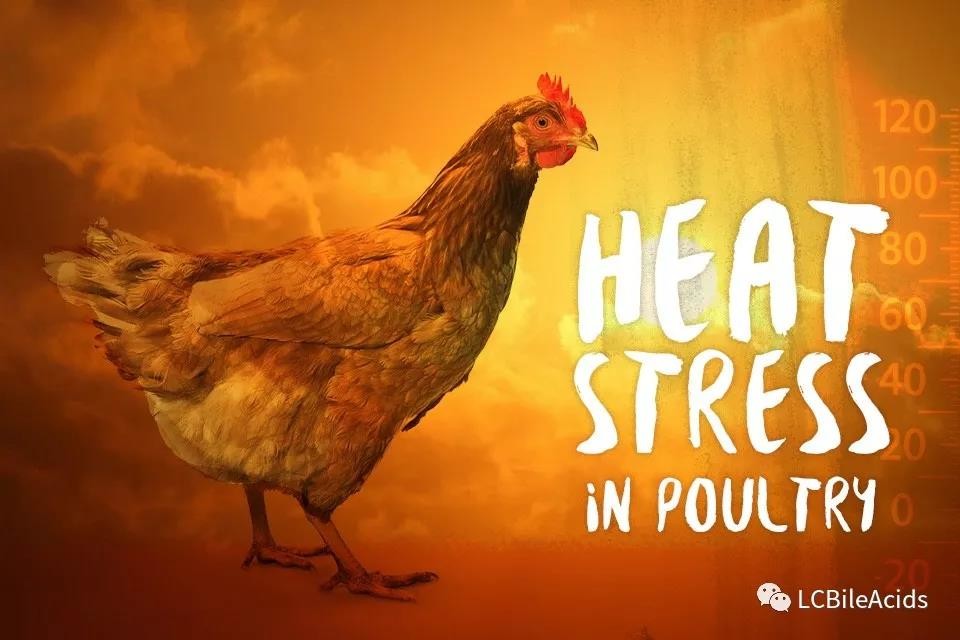Effect of high temperature on poultry feed intake and dietary

Poultry are constant temperature animal, body temperature is generally 40-44 °C, the appropriate temperature is 13-25 °C (excluding young birds). At a suitable temperature, the poultry's regulating function is sound, body temperature remains basically unchanged. When the ambient temperature is higher than normal, the poultry's skin is covered by feathers and without sweating glands. Their regulating function will be disordered and affect feed intake and dietary energy concentration
I. High temperature and feed intake
When the temperature is high, feed intake will also change greatly even with the same feed. When the ambient temperature rises, the poultry do not need to produce heat to maintain body temperature. But because the gap between body temperature and ambient temperature shrinks and body heat is reduced, the poultry will increase the rate of respiration by increasing the respiration rate to increase the metabolic response. When the metabolism of nutrients in the body is higher than the appropriate temperature, physiological activities such as accelerated respiration inhibit the hypothalamus's excitability at the feeding center, resulting in a decrease in feed intake. This contradiction between supply and demand will lead to a decline in poultry growth performance. As the temperature continues to rise, the body temperature of the poultry will increase and may lead to the death.
The feed intake of poultry will decrease with temperature increasing. Take 18-25°C as the reference temperature, temperature increase each 1℃, the feed intake broilers or laying hens decrease 1.6-1.8%.
2. High temperature and diet concentration
When the temperature rises, the feed intake of poultry decreases. In order to dissipate the heat in the body as soon as possible, the peripheral blood vessels of the poultry expand and the blood flow increases, resulting in insufficient blood supply to the viscera, which weakens the gastrointestinal tract and reduces the secretion of digestive fluid. The slowing of gastrointestinal tract peristalsis prolongs the stagnation of food in the digestive tract, so mild heat stress temporarily increases the digestibility of the feed. However in severe cases, the digestibility decreases. Therefore, on the basis of low feed intake, it is necessary to increase the energy concentration of the diet to ensure that the poultry has sufficient energy supply. Adding fat to the feed is currently a consistent method of increasing the concentration of the diet because of the small volume of the oil and the net energy value. A large number of experiments have shown that increasing feed energy at high temperatures does not increase excessive body heat gain because the body heat of carbohydrates accounts for 10-15% of metabolizable energy, while fat only accounts for 5-10%. It is possible to increase the dietary concentration to improve the production performance of poultry under high temperature environment. An increase of 1 to 1.5% in fat content won’t cause problems for laying hens.
How should the protein content in the diet be adjusted while adjusting the dietary concentration?
When heat stress happens, the body heat produced by the protein is about 30% higher than the carbohydrate or fat. This part of the excess heat needs to be released by accelerating the breathing and increasing the blood flow. This will make the heat stress worse. Heat stress is not a demand for protein, but mainly for the needs of various amino acids. Adding synthetic amino acids can not increase the burden on the body caused by excess protein, and can ensure the intake of nutrients. At high temperatures, the essential amino acids of poultry are lysine, methionine, and tryptophan, and these amino acids themselves have no special heat-generating effect.
3. High temperature and bile aicds
It is inevitable that the feed intake of poultry will decrease under high temperature conditions. It is worth discussing in the summer to increase the digestion and absorption rate of unit feed. Bile acid is the main active ingredient of bile and plays an important role in the digestion and absorption of fat and fat-soluble substances in feed. The high temperature makes the digestive fluid secretion of poultry decrease significantly. Adding 200 grams of bile acid to the feed can increase the utilization of fat (1% of the fat content in the feed) by 20 to 30%, but also significantly increase fat-soluble substances (vitamin A/D /E/K) absorption. At the same time, bile acids can relieve endoplasmic reticulum stress caused by heat stress and stimulate bile secretion and gastrointestinal motility.
During the hot season, it is inevitable that the various production performance of poultry will be affected by temperature(like feed intake and dietary energy concentration). However, how to avoid or reduce the effects. We should take measures in the aspects of feeding management, nutrition regulation, etc., making comprehensive response.





